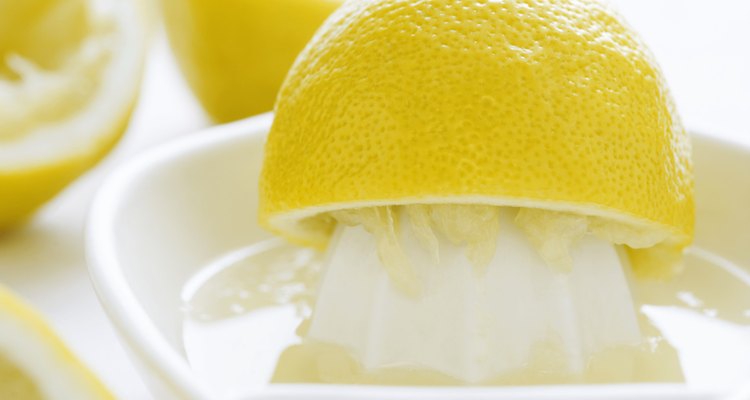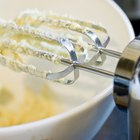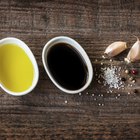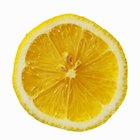
Made from soda ash, baking soda is a naturally occurring soda bicarbonate with an alkaline base. Approximately 5 percent of lemon juice is citric acid, which accounts for the sour taste of the lemon. When you mix an acid and a base, the result is a chemical reaction that creates a new product, with a neutral base. In the case of lemon juice and baking soda, the new product is carbon dioxide gas, water and salt.
Leavening
In baking, baking soda serves as a leavening agent. The baking soda causes dough and batter to expand when mixed with an acid, such as lemon juice. Heat during the baking process fosters the release of carbon dioxide when baking soda reacts with an acid. The carbon dioxide expands the surface area of the heated dough, making it light and airy. The more carbon dioxide released, the more the dough rises.
Easy Does It
Good recipes contain a harmonic balance of ingredients, often tweaked and adjusted to perfection. Baking is a science, which is why it is so important to follow recipe instructions without making too many changes. This is especially true when it comes to leavening agents. According to the University of Kentucky, the carbon dioxide bubbles that develop during the leavening process can get too big. Eventually, the oversized bubbles combine, the bubbles burst and the dough collapses. If you open up the oven and see a flat cake, you may have added more baking soda than the recipe called for.
Cleaning
The bubbly reaction between baking soda and lemon juice is invaluable when it comes to cleaning. In fact, the two mixed together create an economical and environmentally friendly cleanser. If you are looking for a greener way to clean, sprinkle some baking soda into your toilet bowl, followed by a few sprinkles of lemon juice. Let the concoction sit while you tend to other things. Go back to your toilet later and perform a few swishes with the toilet brush for a sparkling clean shine.
Experiment
A fun way to view the reaction between lemon juice and baking soda is by carrying out the balloon experiment. Wrap the opening of a balloon around the pointed end of a kitchen funnel. Pour 1 teaspoon of baking soda into the balloon. In an empty water bottle, add the juice of one lemon and about 1/8 cup of water. Remove the balloon from the funnel and wrap the open end around the top of the bottle. As the baking soda falls into the bottle, it will mix with the lemon juice and produce carbon dioxide, which will magically blow up the balloon.
Related Articles

Can I Re-Carbonate Soda?
How to Make Frosting Bubbles for a ...

What Is a Substitute for Potassium ...
How to Make a Volcano for Kids
How to Mix Baking Soda & Peroxide

Can I Use Soda Pop in Brownies?

Can Sweet Almond Oil Be Used to Soften ...

How to Make Light Airy Italian Bread ...

How to Bake Custard in Ramekins

How to Fix Thong Sandals

What Kind of Solvent Should be Used ...

Does Baking Soda Affect the Height of a ...

Can You Use Soda to Replace Oil in a ...
Easy Strawberry Cake Recipe

Do Eggs Make Baked Goods Rise?

How to Add Fragrance Oil to a Shampoo ...
Easy Soft Pretzel Recipe

How to Mix Your Own Vinegar & Oil

How to Replace Yeast With Baking Soda & ...

How to Make a Box Cake Mix Taste Better
References
Writer Bio
Jonae Fredericks started writing in 2007. She also has a background as a licensed cosmetologist and certified skin-care specialist. Jonae Fredericks is a certified paraeducator, presently working in the public education system.
Photo Credits
Martin Poole/Digital Vision/Getty Images